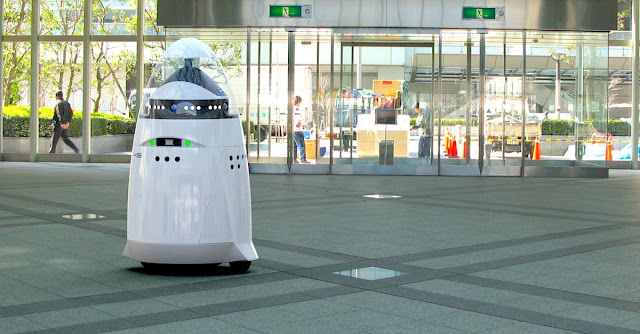Global Security Robot Market Is Estimated To Witness High Growth Owing To Increasing Adoption of Automated Security Systems
The global Security Robot Market is estimated to be valued at US$ 11.8 billion
in 2022 and is expected to exhibit a CAGR of 12.87% over the forecast period
2022-2030, as highlighted in a new report published by Coherent Market
Insights.
A) Market Overview:
Security robots are autonomous machines designed to enhance security and
surveillance activities. These robots are equipped with advanced technologies,
such as artificial intelligence, machine learning, and computer vision, to
perform various security tasks efficiently. The need for improved security
measures and the increasing adoption of automated security systems in various
end-use industries are driving the demand for security robots.
Security robots offer numerous advantages over traditional security measures.
They can be deployed in hazardous environments, providing real-time monitoring
and threat detection without risking human lives. These robots can patrol large
areas consistently and can be programmed to follow predefined routes, ensuring
thorough surveillance. With the integration of advanced sensors and cameras,
security robots can detect and respond to potential threats more effectively,
reducing the risk of security breaches.
B) Market Key Trends:
One key trend in the security robot market is the integration of Artificial
Intelligence (AI) and Machine Learning (ML) algorithms. AI-powered security
robots can analyze complex data patterns, detect anomalies, and make
intelligent decisions on their own. These robots can learn from their
experiences and improve their performance over time. For example, Knightscope's
K5 security robot uses AI and ML algorithms to identify suspicious behavior and
send real-time alerts to security personnel.
C) PEST Analysis:
- Political: Governments worldwide are focusing on strengthening security
infrastructure to combat rising security threats. This creates a favorable
environment for the adoption of security robots.
- Economic: The growing demand for security robots is driving market growth,
leading to increased investment and job opportunities in the sector.
- Social: With increasing security concerns, individuals and organizations are
increasingly opting for advanced security systems to ensure safety.
- Technological: Advancements in artificial intelligence, machine learning, and
robotics have significantly enhanced the capabilities of security robots,
making them more efficient and reliable.
D) Key Takeaways:
1. The global Security
Robot Market is expected to
witness high growth, exhibiting a CAGR of 12.87% over the forecast period, due
to the increasing adoption of automated security systems. This growth is driven
by the need for improved security measures in various industries, including
healthcare, transportation, and retail.
2. In terms of regional analysis, North America is expected to be the
fastest-growing and dominating region in the security robot market. The
region's strong economy, technological advancements, and stringent security
regulations contribute to the high adoption of security robots.
3. Key players operating in the global security robot market include Recon
Robotics Inc., Lockheed Martin Corporation, RoboTex Inc., Northrop Grumman
Corporation, QinetiQ, Thales SA, Kongsberg Gruppen, BAE Systems PLC, FLIR
Systems Inc., Elbit Systems Limited, Boston Dynamics Inc., Leonardo SpA, SMP
Robotics, AeroVironment Inc., DJI, and Knight Scope. These companies are
focusing on research and development activities to enhance their product
offerings and gain a competitive edge in the market.
In conclusion, the global security robot market is witnessing significant
growth due to the increasing demand for automated security systems. The
integration of AI and ML algorithms in security robots is a key trend driving
market growth. With the PEST analysis highlighting the political, economic,
social, and technological factors influencing the market, it is clear that
security robots have become an essential component of modern security infrastructure.
As the market continues to expand, key players need to innovate and adapt to
meet evolving customer demands and stay ahead in this competitive landscape.

Comments
Post a Comment